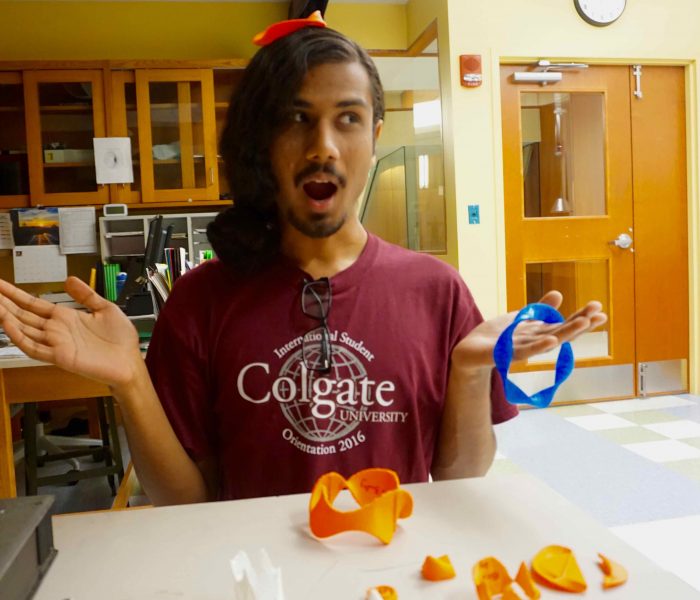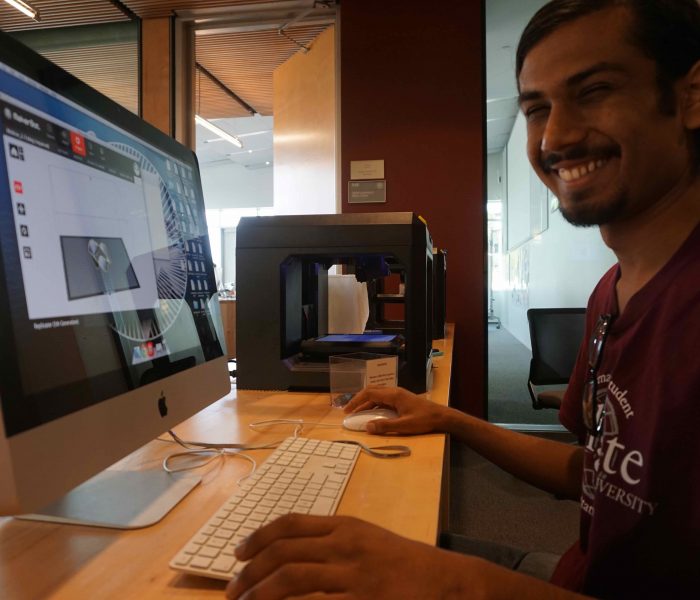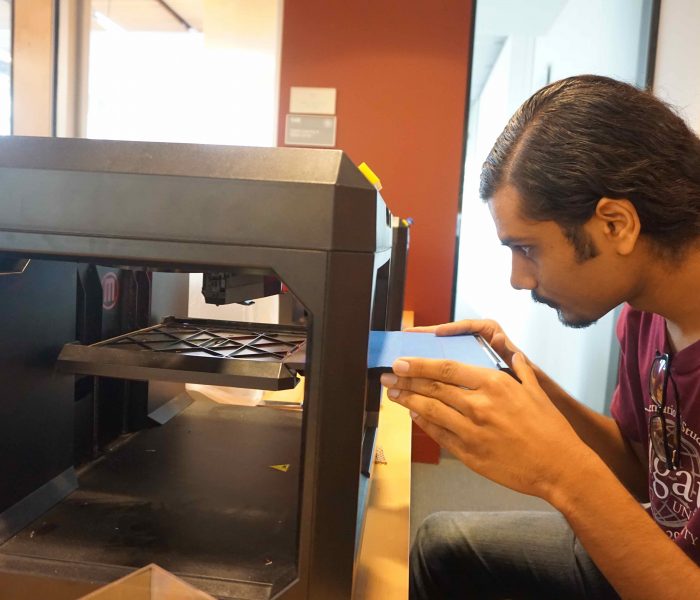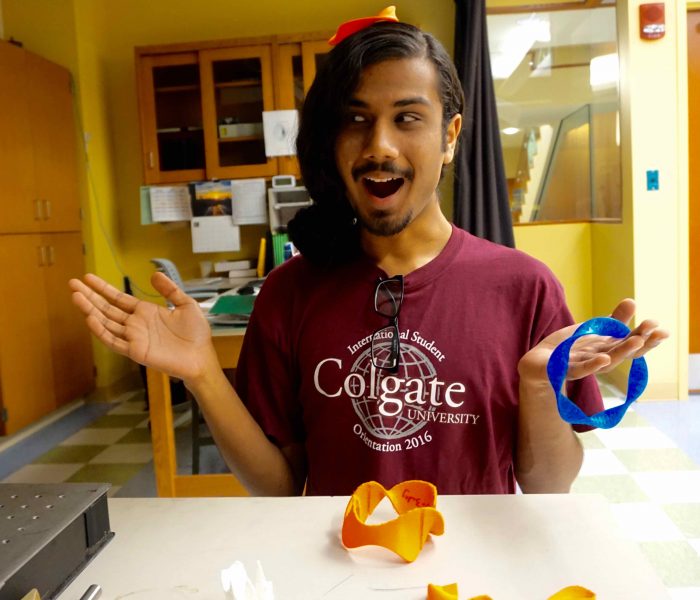In the blog series XYZ with Q, Quanzhi “Q” Guo ’18 visits current and former Benton Scholars to learn about their interests, passions, and accomplishments. In this post, Q 3D printed a Möbius strip with Benton senior Ishir Dutta ’17.
3D graphs can be really hard to visualize and, sometimes, really ugly to look at, even if you model them on a computer screen. (If you have taken classes like Multivariable Calculus or Linear Algebra, you have probably felt this pain.) Such is the case for the surface of a Möbius strip. On a Saturday afternoon, I not only learnt how to model it on MATLAB, I also printed out one using a 3D printer, all thanks to my great teacher, Ishir Dutta’ 17 from Delhi, India.
The weird thing about a Möbius Strip is that it only has one side and one edge. As a result, its discontinuous curvature makes it not only hard to visualize, but also hard to do 3D-modeling.
“There’s a hole in the middle; and to make the surface smooth, it’s like 800,000 triangles to clean up by hand. So if we can print out this object, we probably can print most 3D graphs,” Ishir explained. As graphs contain a lot of information, he hopes to make them more accessible. “When you hold something in your hands, you know exactly what it really looks like,” Ishir said.
Over the summer, under the guidance of Professor Kiko Galvez, Ishir explored ways to take any graph from MATLAB and generate a 3D model. It was months of difficult research; but when Ishir explained the process to me, he did it in such a digestible way that I had no problem following along.
Ishir is definitely no stranger to teaching. As a physics major, he has tutored first-year introductory physics classes, as well as a handful of mathematics classes, since his sophomore year. He was also a TA for the Benton first-year seminars and was involved in developing the first free online course designed by students, for students: BreadX.
“I love teaching, and I think it is a critically important part of society,“ he said. “There’s a meta level to teaching – training teachers to teach – but college professors typically do not have to formally learn how to teach. Given that I may be in academia and likely won’t be taught how to teach, I thought this is the best time for me to learn,” Ishir explained.
During his three years of tutoring, Ishir adopted different approaches to learn when different pedagogies work. “It really depends on the students, the class, and the teaching material,” he said. For example, lectures sometimes just don’t work because teachers can’t gauge how students are processing the information. However, when you have a large class of people, lectures can be a good way to start off and set a baseline.
Ishir not only wants to bring his expertise in the subject area to students, but also his skills in teaching and some different social perspectives. “I especially want to push against the troubling idea that physics and mathematics are inherently difficult and that women are not good at them. Getting to teach would allow me to fight against these stereotypes and educate people on multiple levels,” he said.
He admits that he is probably not going to be the tipping point, since individualized teaching is expensive to implement and, therefore, elitist. “But if a fraction of people start to talk about the problem, change can start to spread,” he said hopefully.
And for all students in his tutoring class, Ishir always makes the effort to know them as individuals, which also facilitates his teaching. He tries to engage at a personal level with as many people as he can. “At this point in time, I care about how I can shape Colgate, or at least how I can shape a niche at Colgate,” he said.
As an international student, Ishir has been a group leader for every year’s international student orientation. “Having been here for three years, I am able to recognize the importance of forming a network of support in my peer group, and so I would like to extend my support to other people,” he said.
I guess the central theme in all Ishir’s involvements is accessibility. From making esoteric knowledge easier to understand to building more genuine relationships, Ishir, like the Möbius Strip, is trying to bind different exteriors into one loop.









